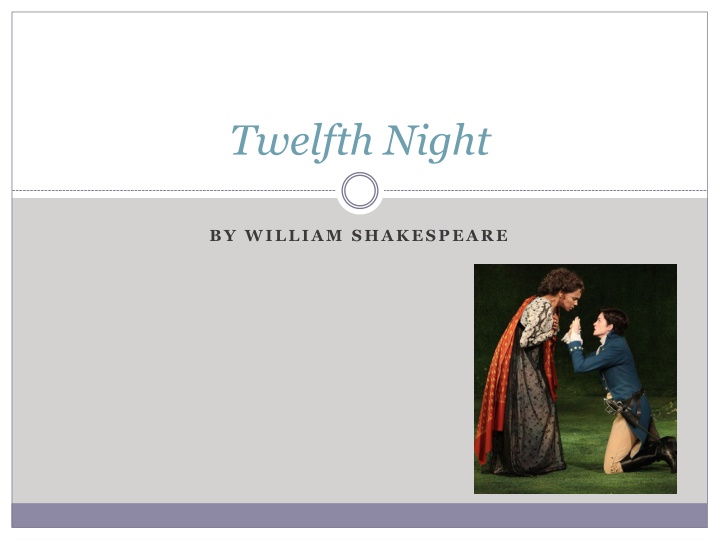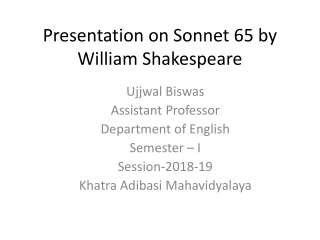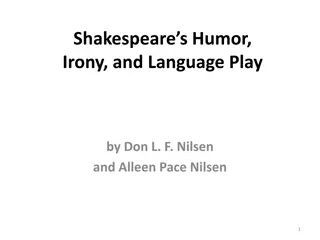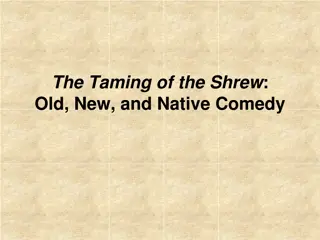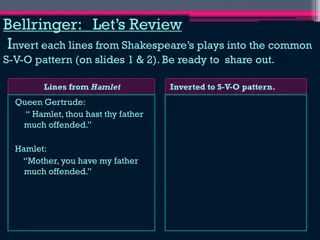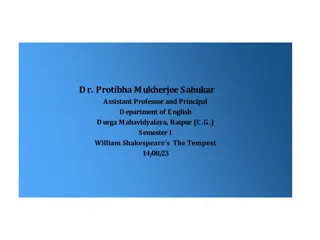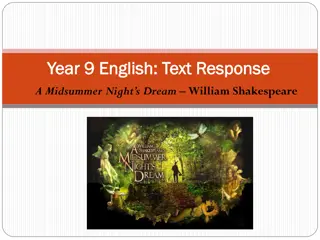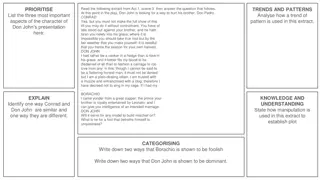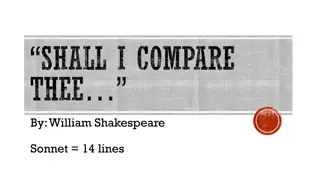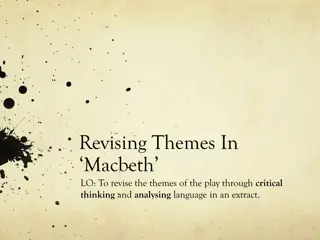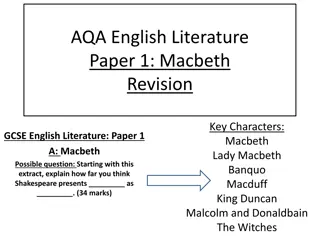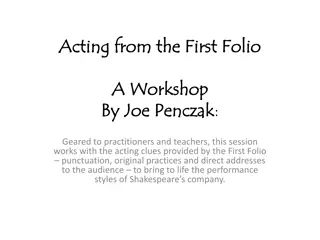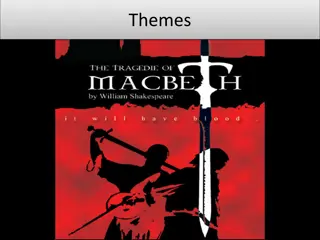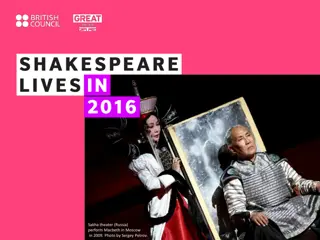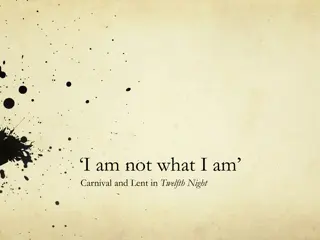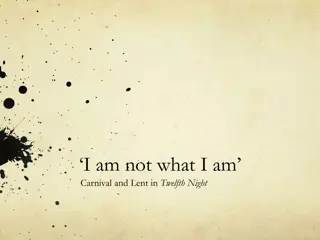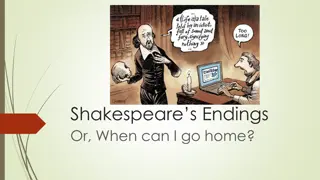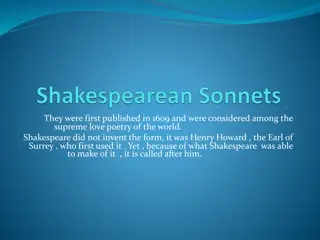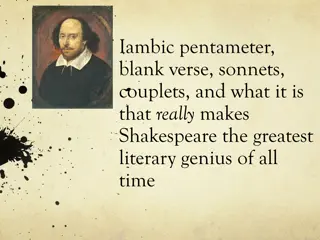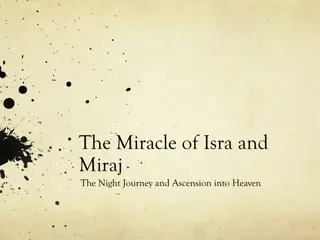Insights into Shakespeare's "Twelfth Night
Explore the origins of Shakespeare's "Twelfth Night" and its characters in Elizabethan comedy. Delve into the historical context of the play, Shakespeare's life, and the universal appeal of his works in Elizabethan England.
Download Presentation

Please find below an Image/Link to download the presentation.
The content on the website is provided AS IS for your information and personal use only. It may not be sold, licensed, or shared on other websites without obtaining consent from the author.If you encounter any issues during the download, it is possible that the publisher has removed the file from their server.
You are allowed to download the files provided on this website for personal or commercial use, subject to the condition that they are used lawfully. All files are the property of their respective owners.
The content on the website is provided AS IS for your information and personal use only. It may not be sold, licensed, or shared on other websites without obtaining consent from the author.
E N D
Presentation Transcript
Twelfth Night BY WILLIAM SHAKESPEARE
William Shakespeare: Bare Bones Biography He was born in 1564 in Stratford-on-Avon and died in 1616. He is arguably the most admired author of all time. The only known education he received was grammar school He married Anne Hathaway who was 9 years his senior. While he had three children, his son Hamnet died at a young age (possibly from the plague). Shakespeare gained a reputation as an actor, playwright and poet and was the co-owner of The Globe Theatre in London. Because of the plague, the London theatres closed from 1592- 1594. Thus, Shakespeare wrote 154 sonnets during this time.
Historical Context The basic plot of TN is not original to Shakespeare. This play was inspired by several Italian comedies that appeared in the decades prior to TN s first performance. The theatre was an integral part to life in Elizabethan England. The Globe Theatre seated 3,000 spectators of all classes Groundlings paid 1 penny for admission their entire day s wage!
William Shakespeares plays had universal appeal among all classes in Elizabethan England. The Globe Theatre
Elizabethan Comedy A genre named for Queen Elizabeth I, the ruling monarch during Shakespeare s time. Elizabethan comedies included the following conventions: A lighthearted tone Mistaken identities Multiple plot lines Frequent use of puns A clever fool or servant A conflict between propriety and debauchery Young lovers who overcome obstacles to their relationship A happy ending that includes marriages, reconciliations, and reunions.
Characters Orsino, Duke of Illyria: Loves Olivia; loved by Viola Lady Olivia: A rich countess; loved one of the Duke; loves Viola (as Cesario) Viola: Twin sister of Sebastian; Cesario; page to Lady Olivia; loves the Duke
Characters Sebastian: Twin brother of Viola; Roderigo; one who is confused with his twin sister (as Cesario) Sir Toby Belch: Olivia s uncle; a drunkard; co- conspirator with Sir Andrew, Feste, and Maria Sir Andrew Auguecheek: Suitor for Olivia s hand in marriage; a foolish man; co-conspirator with Sir Toby, Maria, and Feste
Characters Feste: Clown; co-conspirator with Sir Toby, Sir Andrew, and Maria; occasional commentator on what is happening Malvolio: Olivia s steward (Manager of Estate); a vain and pompous man; object of the conspiracy to humiliate him Maria: Servant of Olivia; co-conspirator with Sir Toby, Sir Andrew, and Feste
Characters Sea Captain: Friend of Viola Valentine and Curio: Aristocrats in Olivia s court Fabian: An aristocrat in the Duke s court
Major Themes Appearances do not always reflect reality. Role playing is a part of social life. Love often resembles madness.
Motifs : A Reoccurring Idea in a Work of Literature Fools/Madness Deceptions/Illusions Role-playing/Disguises Inversion of Normal Order The Fleeting Nature of love and beauty Concealed love Letters/Messages
Figurative Language & Literary Devices Metaphors If music be the food of love, play on. Similes Like Arion on the dolphin s back Personification words are very rascals Allusion: a reference to a person, place, myth, event which is not part of the story, but the reader is expected to recognize.
Figurative Language & Literary Devices Paradox: a statement that appears contradictory but contains truth. Than love that would seem hid: love s night is noon. Oxymoron: A term or phrase that is apparently self-contradictory. sweet pangs Verbal Irony: a discrepancy between what is said and what is really meant. Pun: an expression that utilizes two distinct definitions of the same word or phrase to achieve emphasis or humor.
Dramatic Conventions and Techniques Conflict: external & internal Soliloquy: A speech delivered by a character while alone on stage. Provides insight into the character s thoughts, emotions, and motives. Aside: words spoken by a character on stage that are meant to be heard by the audience only. Situational Irony: when a situation has results contrary to those expected. Dramatic Irony: when the audience is aware of something the characters don t know.
The play we are going to study in detail is the comedy Twelfth Night The play concerns twins who get separated during a storm at sea. Viola disguises herself as a man and this causes all sorts of problems for her and confusion for other characters. This confusion is increased when her lost brother Sebastian arrives on the island. The confusion is only resolved when Viola and Sebastian meet up at the end of the play. The comedy lies in the confusion that is created by various characters in the play.
The Sub Plot The sub plot in any play tends to mirror or compliment the main action in a play. In Twelfth Night the main characters are those who are important people in the play s society (Duke Orsino and Countess Olivia and Viola) and we follow their attempts to fall in love. The more minor characters are those who are lower down the social ladder but are still important in the play (Sir Toby Belch, Sir Andrew Aguecheek and Maria). Their actions also revolve around their attempts to fall in love.
